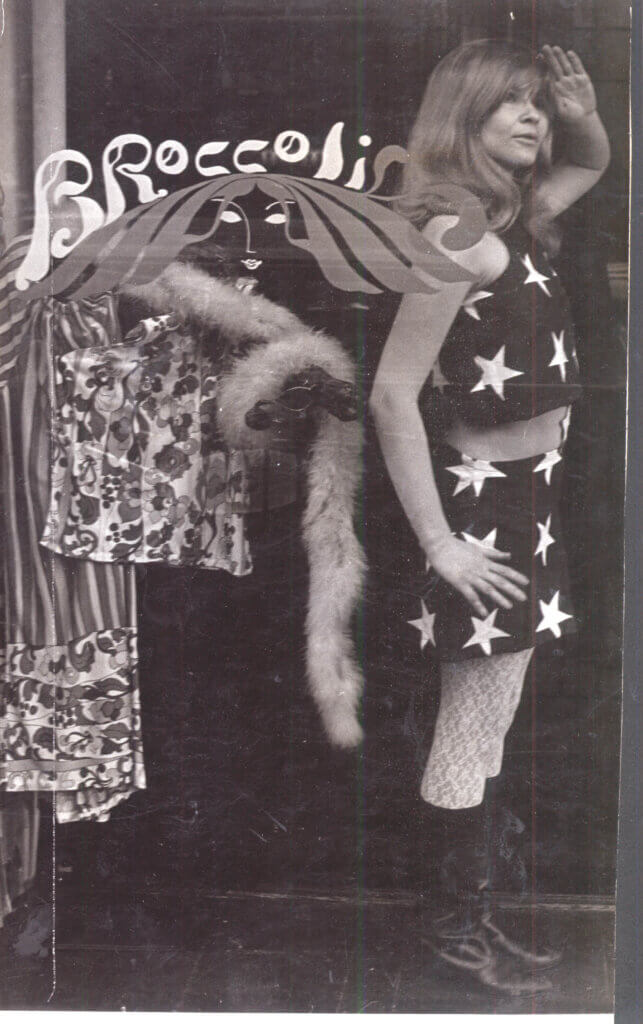
I probably met Trina Robbins at my first full San Diego Con in 1985. I’m not sure what the circumstances were but Trina always had an eye out for women in comics, and I was writing for various comics magazines of the time so she must have known we were kindred souls. Also, you could fit all the women in comics into one room – or on one panel – so we would all end up hanging out.
Or perhaps it was a signing that year for Women and the Comics, her first book about the history of women cartoonists, co-written with cat yronwode. It took place at the Golden Apple in LA, and afterwards a bunch of us went to the Moun of Tunis, a fancy Middle Eastern place that had, that night, male belly dancers. Eating rose-flavored chicken with our fingers and talking about comics history…still one of my most memorable meals. (I always wanted to go back there but never did.)
Trina also did a second version of the book, called A Century of Women Cartoonists. I’d told her that my mother was briefly an underground cartoonist, and my mother found a page of her comics which Trina included in her book, something I’m still extremely proud of.
Trina invited me to come visit her and her partner, Steve Leialoha, in San Francisco, and I did it twice in the early 90s. I was told there was a guest room, but what a guest room…it was like my childhood bedroom only so much cooler, with even some of the same fantasy paperbacks I had on my own shelves. Spotting The Serpent by Jane Gaskell, I noted it was one of my favorite books. “Oh, I correspond with her!” Trina said with the enthusiasm only she could express. Somehow the idea of corresponding with one of my favorite authors had never occurred to me, but for Trina it was just what you did.
I’d been lured up to visit at holiday time, and so I was whisked off to Ron Turner’s legendary Last Gasp Holiday Party. Here’s a photo of Cindy Martin, Trina and I all dolled up for the party, taken by Steve. It was a night to remember for sure. It’s very rare in my life for me to go on trips that aren’t somehow connected to a comic-con….that’s just how I roll. These visits were just wonderful though. During the day Trina would take me thrifting, including to the famous clothes by the pound Goodwill. We’d also visit with her friends and other cartoonists, and walking around Steve and Trina would point out other landmarks of cartooning, including S. Clay Wilson’s house where he supposedly had kept a dead cat in the window.
On my second visit we took the BART to some party, but when we got off it on the way home, it was pouring rain. We were all wearing our finery but had no choice but to march through the downpour holding whatever we had over our heads. Somehow the three of us decided to start singing “You’ll Never Walk Alone” to buoy our spirits, and we made it home sodden and laughing. It was discovered that Margaret Atwood was on Letterman so we all settled down with some hot tea to watch.
Anyway, the Bay Area was so much different then…still Bohemian and funky, and seeing it through Trina and Steve’s eyes was a marvel. When I moved back to New York I stopped going to WonderCon for the most part, so I missed out on the rise of Silicon Valley, and the coming of the tech overlords. My visits with Steve and Trina were weird and magical, like something out of a book.
Trina was instrumental in founding Friends of Lulu, the 90s non-profit that aimed to prove “Comics are for everybody!” She’d had the idea of an organization for women in comics for a long time, and the time was finally right. We served on the board together for years, and Trina was usually the most outspoken member. My idea for Lulu was for the message to be more covert than controversial – by promoting the idea that if you had more women reading comics, you’d have more customers and everyone would make more money – surely no one could disagree with that idea! Undoubtedly informed by her own experiences overcoming the Underground Boys Club, Trina didn’t shy away from confrontation. So there were some tussles, for sure.
Now that I have the benefit of years and seeing what changes and what doesn’t, I’m more sympathetic to the idea of being the bomb lobber that Trina drew for a proposed FoL logo. The rest of the board rejected it – some of us on the board were trying to be nice women that the men of comics wouldn’t be afraid of, and that wasn’t Trina’s style. It is an absolutely iconic image, though, and 30 years later, I can see we really were throwing a bomb into the comics industry with what we were proposing. The bomb exploded into fragments everywhere, named Raina Telgemeier and Kate Beaton and Rachel Smythe and Spike Trotman and on and on.
Anyway, you really just say the word “Trina” and everyone knows what you are talking about. A force of nature, a cultural savant, a cartoonist who made history and then reclaimed history with her research. A visionary. I have so many other memories – dancing at conventions to Seduction of the Innocent, the all-star band that Steve played bass in, lunch with her and Flo Steinberg, meeting Hilda Terry and Lily Renee through Trina, art openings, book signings, coffee dates, and dinners. Lots of laughs, and smiles and jokes. And of course sometimes anger! Trina never forgot some of the slights she experienced and could still build up a good blast on many subjects.
She came to stay with me a few times at my tiny New York apartment, always there on some business or other. Trina was a cat lover to the highest degree possible, and I had a little black cat named Inky. Trina said Inky was the worst cat she ever met and…..she was right. I had a codependent relationship with Inky, but she hated anyone else who visited, and expressed it with a flurry of hisses, scratches and bites. (Other houseguests had similar terrifying experiences with Inky, alas, although only one cat sitter had their luggage peed in, thank god.) Poor Trina! As I said, she only stayed with me a few times, but the shame of knowing I had a horrible cat lives on to this day.
Trina was so smart and knowledgeable about so many things. You learned so much by osmosis just being around her. And as great as her accomplishments were, I know she would also want to have it noted in her obituary that she was so damned fashionable all the time! Trina had designed clothes for so many famous rock stars of the 60s and obviously she understood how to craft a style. Seeing all the photos of her these last few days I’m struck by how stylish and timeless she was. I love this photo of her and Steve. The time must be the early 80s or so, but you couldn’t tell by the clothes both of them are wearing.
Her biggest mission for many years was rediscovering women cartoonists who conventional comics history had forgotten no matter how popular they had been in their day. I saw Trina’s slideshow about women in comics several times, and it was so revelatory. “Why have there been no great women cartoonists?” Because the men who wrote the histories said so! As I wrote of Ramona Fradon, years before she left us,
If you hadn’t noticed by now, inspired by Trina Robbins, this is perhaps the thread of my life’s work, exposing the lost and forgotten women of comics history and why they were lost and forgotten. It’s not that Severin and Fradon are lost and forgotten, but that they were always left off bullshit lists like this.
I’m no herstorian, unlike Trina, but you can bet that this is a mission I’ll carry on as best I can.
Last year I was contacted by Tim Foster at Capitol Weekly to participate in an oral history project they were putting together for the California Public Library and Open California. Tim wanted me to interview Trina. I jumped at the chance, but suggested we also do one with Ron Turner, an idea that Tim readily agreed to. They had grant money to pay for the project so I was flown out to San Francisco and we spent two days chronicling the history of underground comics.
The kids on TikTok these days have something they call “reality shifting” where they “attempt to shift their consciousness or awareness to alternate realities or “realms” through various techniques, often involving meditation, visualization, scripting and intense focus.”
I’d been immersing myself in the underground history, reading Trina’s memoir, and any interview with both Ron and Trina I could get my hands on. I think now that I really did reality shift because it seemed like this incredible era of innovation and creativity and larger than life personalities was still around us as we talked. I could imagine Robert Crumb standing on the street with his comics in a baby carriage, or Willie Mendez, Trina and the rest meeting to plan Wimmen’s Comix. I could even picture Art Spiegelman heading out to San Fran with the rest of the crew and then deciding it wasn’t for him and heading back home just as fast.
I realized that although I knew Trina (and was so lucky to call her a friend) I’d never really thought about Trina. Reading her book, it’s astonishing that one woman did all that and knew all these people and connected so many, and changed the world in small ways that became larger ways. What an amazing woman. And what determination she had. She was self made in that there was no one like her before her and there will never be another one like her after. She had to invent herself, but just being herself the rest of the adventure and achievement followed along.
Last May, arriving at Trina’s building for the interview, it struck me that it had been 30 years since I had been there, so it was even more of a trip through time. Steve and Trina’s home is a museum with artwork and books and artifacts, and still some of those books that I read as a kid. The city had changed so much, but here was a little corner that maintained that weird magical atmosphere. (On my first visit with Steve and Trina, I noted that they were collectors/packrats like most people in comics, but only kept the coolest stuff. It’s a lesson that I wish I had learned better.)
I’m so lucky to have spent that afternoon with Trina. As we left I said “I hope it isn’t another 30 years before I visit again.”
“I hope not too,” Trina replied with that little chuckle of hers. “Because I probably won’t be here.”
Trina really did seem like someone who would live forever. And she will.
You can view the Oral History with Trina here.



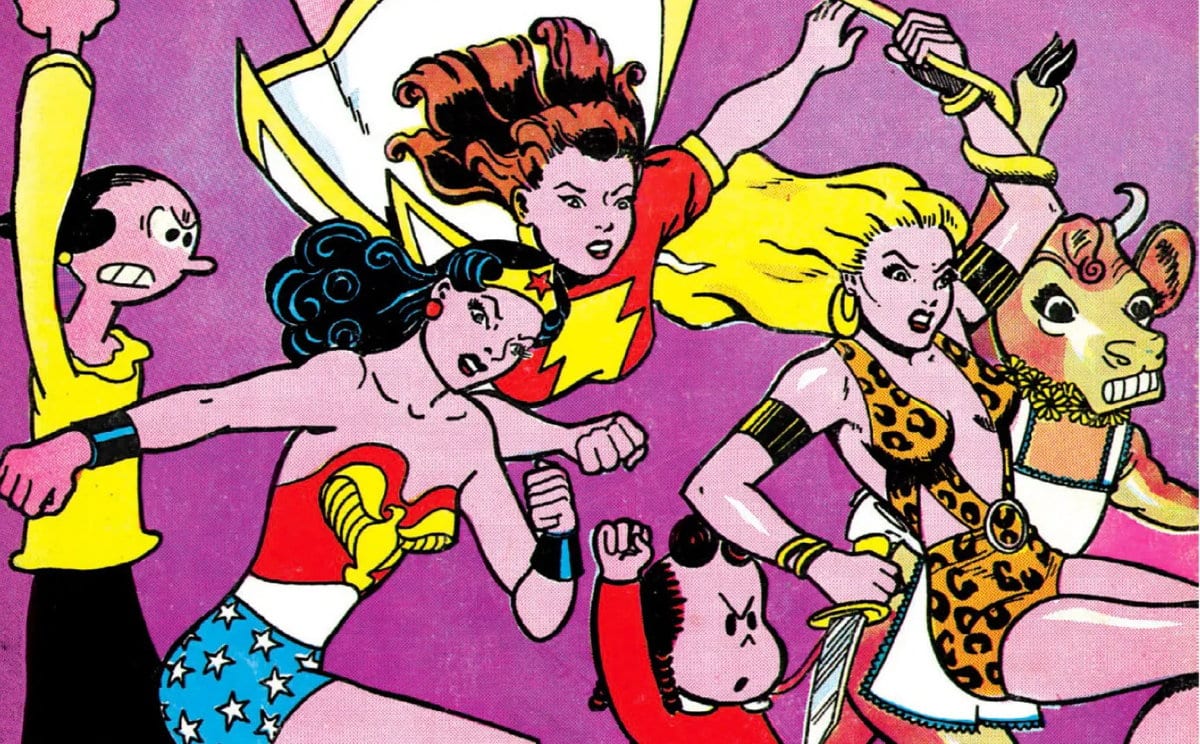
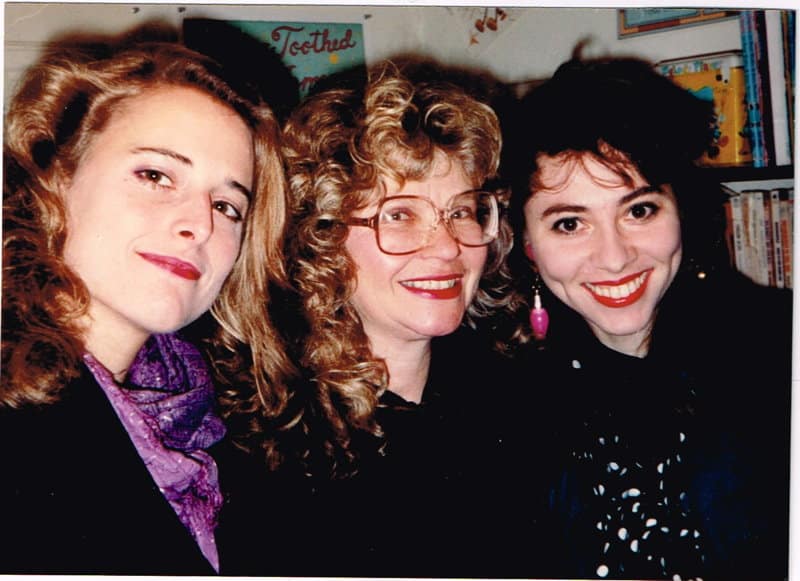
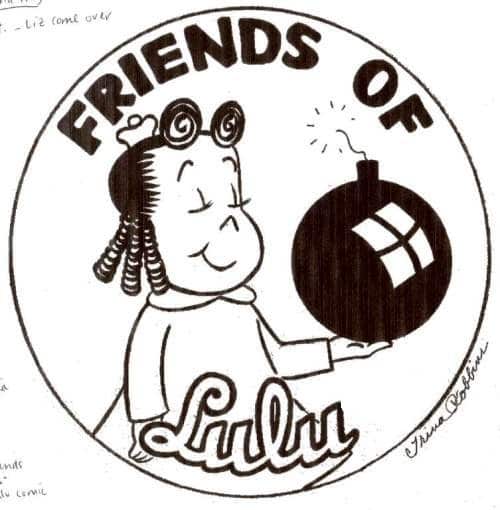
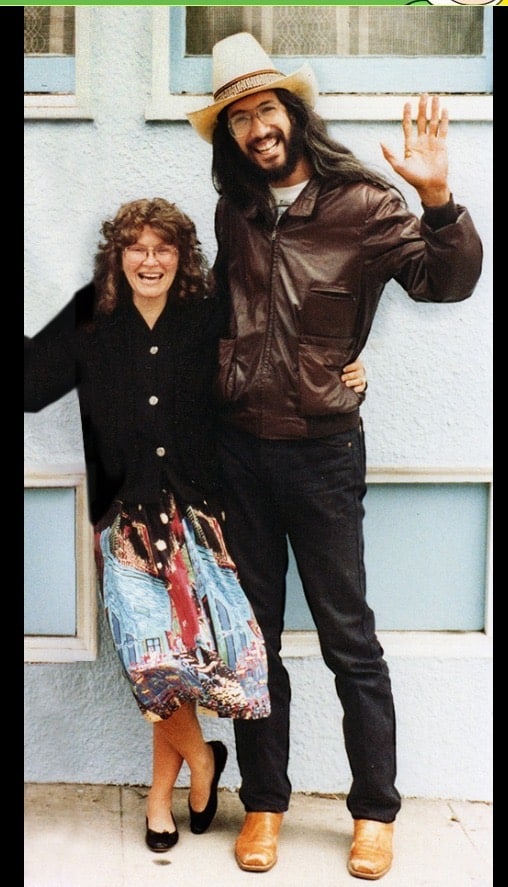
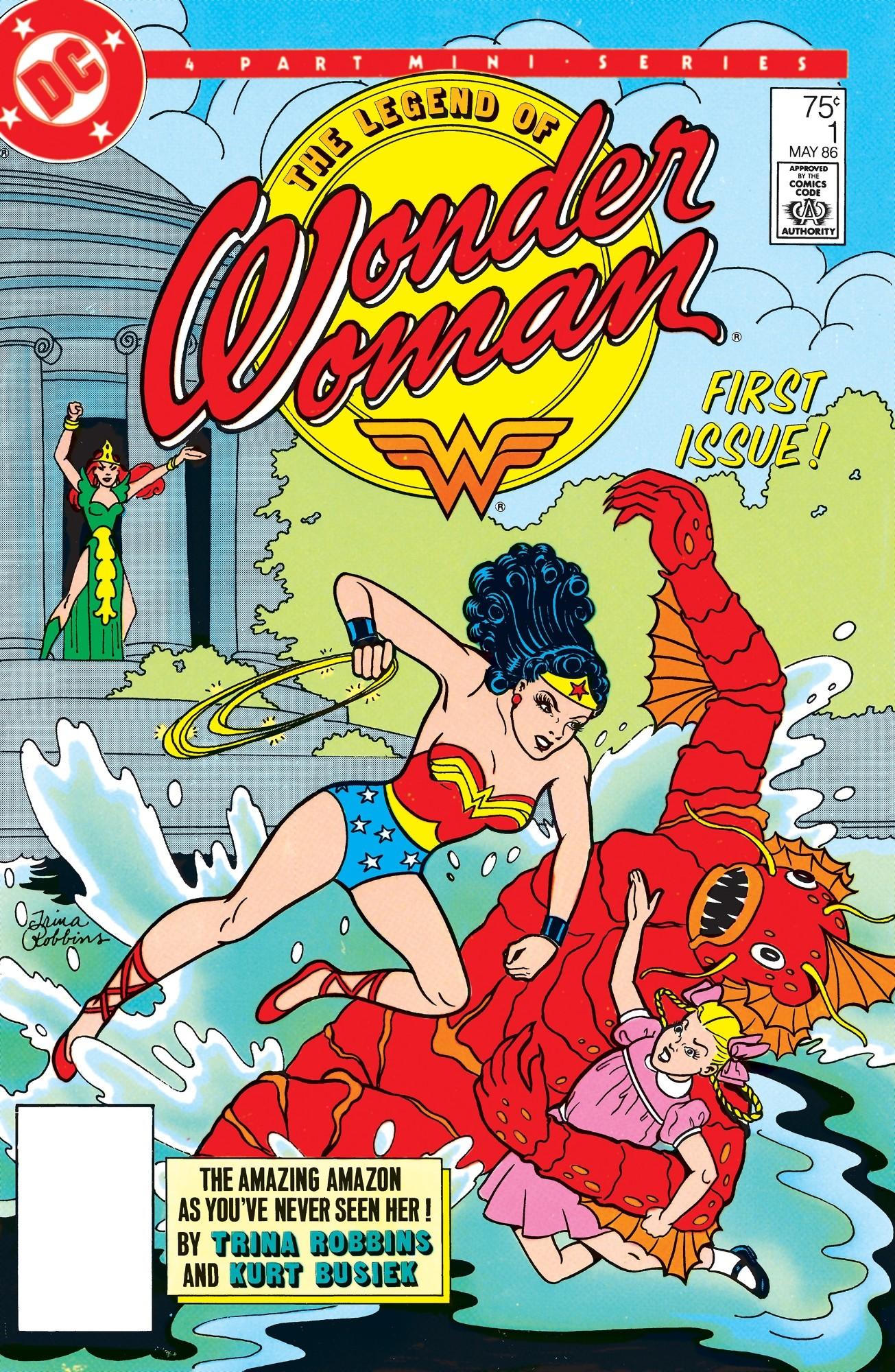
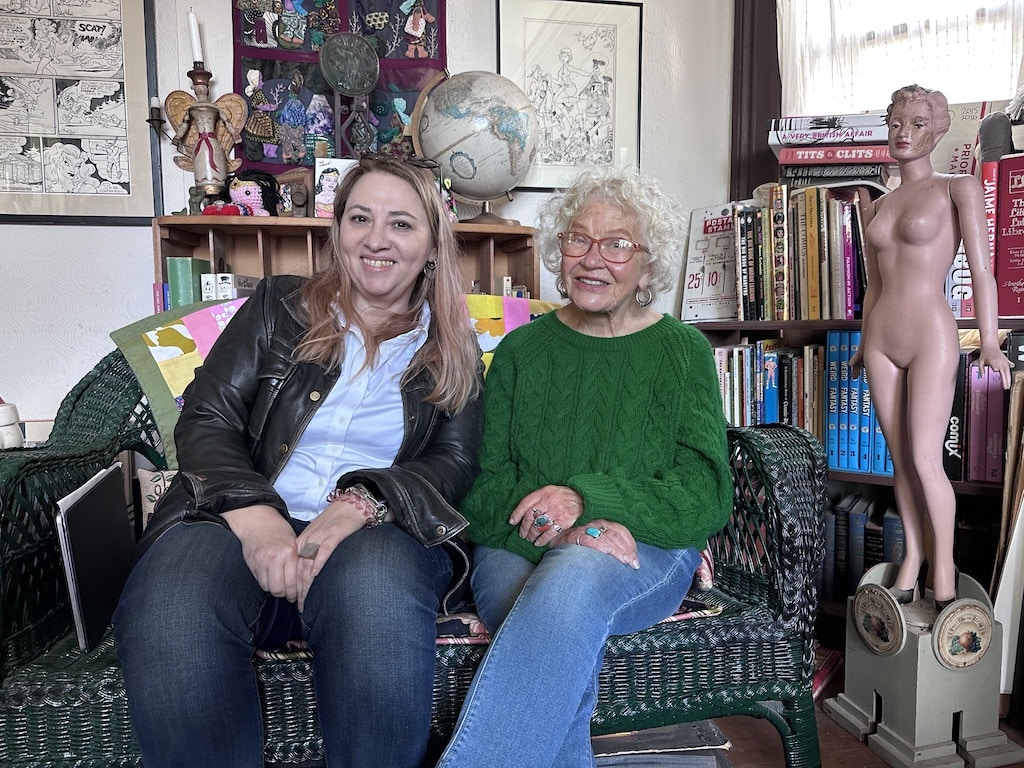
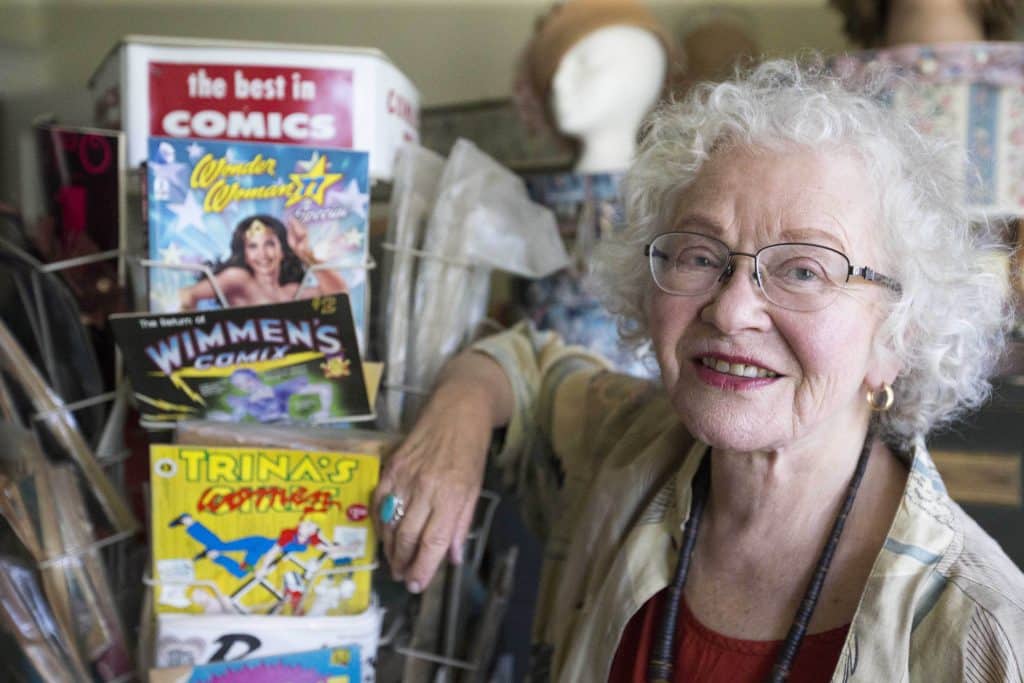


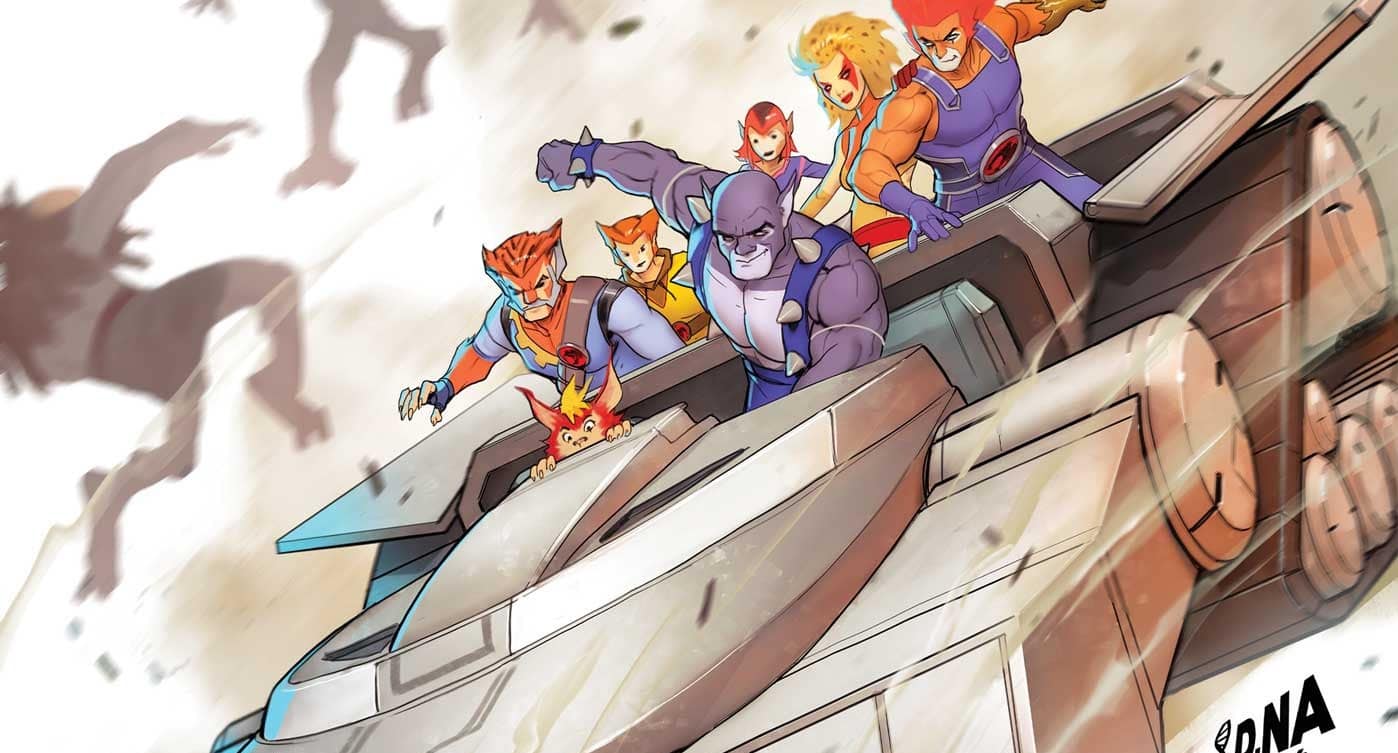


Thanks Heidi yours was the tribute I was waiting for.
Beautiful tribute Heidi, my wife who’s not a comics geek agreed
Lovely. Thank you for writing this. I needed it.
Wonderful tribute and wonderful interview. Thank you, Heidi.
Beautiful stuff, thanks for this.
Comments are closed.